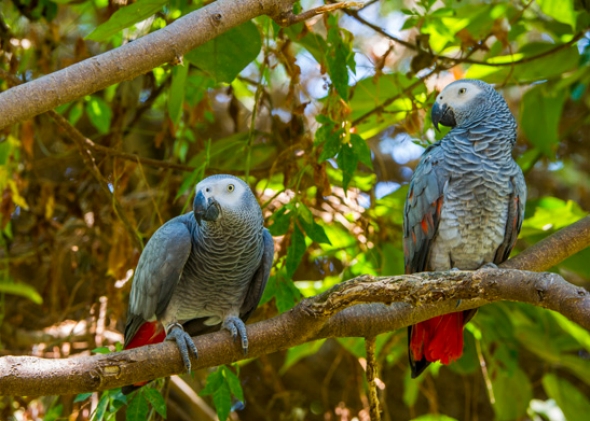Conservationists Cause Extinction
by Aya Katz
Extinction is forever. That’s what they say, and, barring a Jurassic Park scenario, it’s actually true. Most animal lovers are concerned about the endangered species in this world. None of us want to lose the diverse flora and fauna that make up life on this planet. But did you know that with their statist, interventionist policies, many groups purporting to serve conservationist agendas are actually causing the extinction of more and more species?
1. Trade Bans Create a More Demanding and Dangerous Market

The Convention on International Trade in Endangered Species of Wild Flora and Fauna (CITES) is a multilateral treaty intended to protect endangered plants and animals. All member states to the United Nations are signatories to the treaty, but the treaty itself covers trade with nations that have not signed it. In this way, the richest and most powerful nations in the world are able to bully less powerful and connected countries, many of which depend on trade to survive. As with all such schemes involving central planning, there are tragic unintended consequences.
According to Ivo Vegter, a South African author and columnist who writes from the perspective of individual liberty and free markets, many of the policies enacted under CITES actively undermine conservation in Africa. This is partly a result of ignorance in the first world about third world problems and partly due to deliberately misleading propaganda by animal rights activists. For instance, in countries like Namibia and Zimbabwe where conservation of elephants is well managed and some culling is required due to overpopulation, African states that have failed to protect their own elephants are now running roughshod over the ivory trade.
As an example of misleading propaganda, Vegter cites Bagheera, an educational website created by Microsoft’s co-founder Paul Allen, which lumps together both Indian and African elephants and declares them all endangered. In fact, African elephants are not endangered at all. Even within Africa itself, not all elephant populations are facing the same problems, and centralized rules affecting all elephants regardless of where they are located is forcing mismanagement. Ron Thomson, founder of True Green Alliance, expressed incredulity at the new CITES policies:
“How will adding unneeded and unwanted extra protection of southern Africa’s elephant populations help those that are in decline in west Africa? This is not how wildlife management works. Each population has to be managed according to its own merits. And if CITES insists on not allowing southern Africa’s totally safe elephant populations to be managed according to their respective merits, then CITES is forcing the states of southern Africa to mismanage their elephants.”
A similar situation is afflicting the trade in African Grey Parrots. African Greys are native to equatorial Africa and are very popular worldwide for their longevity, intelligence and ability to mimic human speech. They make excellent pets and are useful in animal language research. Alex the Parrot was an African Grey who expanded scientific knowledge in the field. A new listing on Appendix I will now prohibit all trade in wild African Grey Parrots.
You would think that this listing would not have much effect on the trade in African Greys, because 87.5% of African Grey Parrots exported are bred in captivity. South Africa is the world’s largest exporter, and it has never had a native population of African Greys. But, according to Vegter, the illegal trade in African Greys occurred despite their being listed as endangered in their specific countries of origin under Appendix II since 1981. Vegot writes:
Across Africa, tens of thousands of parrots have been exported in violation of quotas. Thousands have been exported in violation of total export bans. Thousands more had CITES export permits saying they were captive-bred, but came from countries with no known breeding facilities.
Imposing a ban on exports does not diminish exports. Quite to the contrary, it raises the market price of the forbidden item and gives greater incentives to black marketeers to go after the coveted bird. According to Vegter:
By banning or heavily restricting international trade in endangered species, CITES has not saved these species. All it achieved in the last few decades has been to drive illegal trade in flora and fauna up the charts to rival the black markets in drugs, counterfeit money, weapons and humans.
Making something illegal to sell does not make selling it happen less often. It just makes the trade in the forbidden item more lucrative to smugglers.





4 comments
… [Trackback]
[…] There you will find 69590 more Information to that Topic: thelibertarianrepublic.com/extinction-caused-conservationists/ […]
… [Trackback]
[…] Find More here on that Topic: thelibertarianrepublic.com/extinction-caused-conservationists/ […]
… [Trackback]
[…] Here you will find 15529 additional Info to that Topic: thelibertarianrepublic.com/extinction-caused-conservationists/ […]
… [Trackback]
[…] Information on that Topic: thelibertarianrepublic.com/extinction-caused-conservationists/ […]